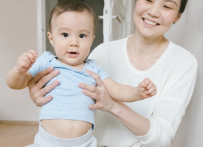New and expecting parents, you now have another bundle of joy to celebrate! Paid Parental Leave (PPL) has had a refresh - it’s now longer, more flexible and for the first time ever, superannuation will be paid on top!
Let’s face it, living is expensive and things only get more expensive when you welcome a baby into your life. Every little bit of government financial assistance helps, so you’ll want to make the most of all your family related entitlements. But there is A LOT to wrap your head around to fully understand your options and get the best deal for your family circumstances.
To help you get started, we’ve put together this quick guide with links to detailed info on the things you’ll want to know more about:
What are the main changes to Paid Parental Leave in 2025?
- Superannuation contributions (12%) will be paid on top of PPL by the government
- Families get more days of PPL (120 days in total)
- Partners can share access to a family’s “pool” of PPL days
- There is more flexibility around how and when PPL days can be used by both partners
- Parents have more time to use up all of their PPL entitlements (up to 2 years from the baby’s birth or adoption)
These changes are working toward a more balanced PPL system - one that better respects the vital role of caregiving and backs both parents to play their valuable roles, with a little less financial stress and a lot more freedom to return to work in ways that fit best with their circumstances.
How many days Paid Parental Leave can parents get?
There is a total of 120 days (24 weeks) of Paid Parental Leave available for parents that meet the eligibility requirements.
For couples:
- 15 PPL days out of the 120 are reserved for use by only the partner of the mother/primary carer (unless they are entitled to an exemption)
- 105 days of PPL is the maximum that can be used by one parent in a couple (unless exemption applies)
For singles:
- If the mother/primary carer is single, they’ll be able to use the full 120 days of PPL
What is the rate of pay for Paid Parental Leave?
The PPL pay rate is based on the National Minimum Wage, which increases yearly. For 2025-2026, the PPL rate is $189.62 a day before tax, or $948.10 per 5 day week (yes, PPL is considered taxable income).
Good news is, parents will now receive a 12% superannuation contribution paid on top of any PPL days taken. Super payments will be paid to each parent separately, according to the number of PPL days they each take.
While it doesn’t mean more money in your pocket now, your future selves will be stoked to have a little more in your retirement savings!
How and when can Paid Parental Leave be taken?
This is where the flexibility really kicks in! Parents can:
- Take PPL at any time after their baby’s birth or adoption date
- Enjoy having 2 full years to use up their PPL entitlements after their baby’s birth or adoption date - PPL balances remain in the parents’ Centrelink account for use when needed within the 2 year period
- Take PPL days in a variety of ways, including a large single block, multiple smaller blocks, single days, or a combination of all of these - parents have flexibility to choose based on their family’s needs
- Choose to take PPL days at different times, in turns or even at the same time for up to 20 days (or longer if they meet exemption requirements)
- Change their requested PPL days via Centrelink online if needed
And just in case you’re wondering… Parents can:
- Take PPL days before, after or at the same time as any paid or unpaid leave from their employer (of course this needs to be organised with their employers)
- Continue to use PPL days after returning to paid work, as long as they do so on different days
- Claim Child Care Subsidy (if eligible) for childcare while continuing to use PPL and/or undertaking paid work - but again, these must be done on separate days. Use our childcare subsidy calculator to help find out your entitlements.
How and when can families apply for Paid Parental Leave?
- Start with eligibility: Parents should check they meet the criteria, including work and income tests and residency status
- Do homework early: with so much parental leave information to unpack, parents need to allow themselves plenty of time to understand their entitlements and options
- Get organised: Discussing plans for sharing leave, when to take it and how it could be combined childcare or part-time work puts parents in the best position to maximise their parental leave benefits
- Discuss with employers (at least 10 weeks before your child’s expected date of birth or adoption): employers play a key role in helping parents understand and organise coordinated leave and return to work plans that make the most of their government and employer entitlements to best benefit their family.
- Lodge PPL claims: both parents are required to submit claims via Centrelink online so they’ll need to set up My Gov online access and link their Centrelink accounts
What’s the process for claiming Paid Parental Leave via Centrelink?
Parent 1 applies first:
- Apply early - up to 3 months before the due date or adoption
- Must include at least one leave date (more can be added later)
- Proof of birth or adoption is required after baby arrives to finalise the claim
- Must apply within 12 months of the child’s birth/adoption
- Will be required to give permission for their partner to share and use PPL days
Parent 2 applies:
- Has up to 2 years to submit their claim
- Can apply for PPL days from the family’s shared balance
- Can only claim PPL days that are approved by Parent 1 who receives an action task via their Centrelink inbox
Managed to wrap your head around Paid Parental Leave but could use a little help understanding your childcare options? Care for Kids is here for you! Compare services, book tours and find care that fits your family’s future.



































